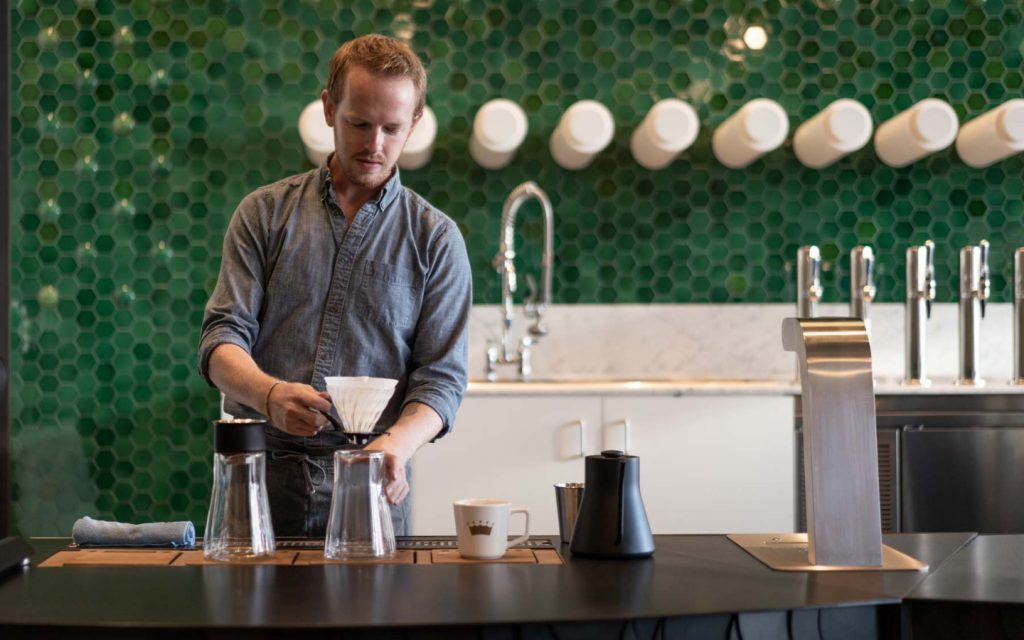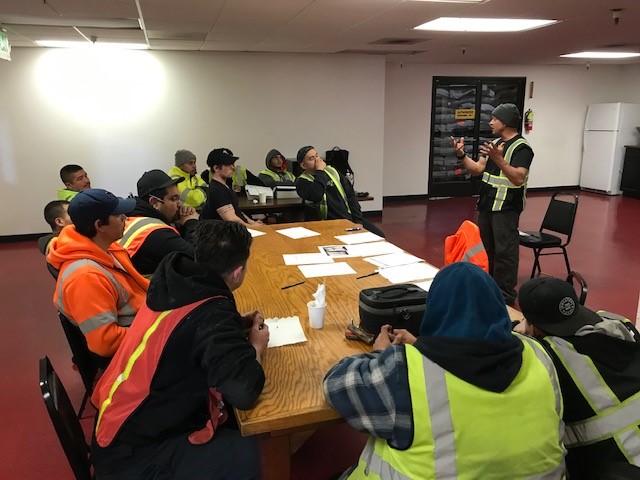The Crown Jewel program started humbly in August of 2016 with a small suite of coffees we’d grown familiar with and were proud to share, and a small-scale version of our current analysis project. For all the years, the hundreds of coffees and thousands of analysis since then, the most common question for us remains this: “How do you choose a Crown Jewel?”
From the inside, the answer has always seemed somehow self explanatory. These coffees are great. We love them. Put ‘em in a box! The ever-present truth is that there is a healthy balance of a number of factors, both quantifiable and intangible. Here’s a little window into how the process works.
What Are We Looking For?
Quality, Uniqueness, and Relationship Driven Coffees
In terms of cup quality, we never put a coffee in a CJ box that we won’t stand behind. These coffees are meant to be standard bearers for excellence.
Yet there is no minimum cup score. We feel that there are a number of attributes that can cause a coffee to be great, and perhaps idiosyncratic or even iconoclastic without necessarily being a 90 point screamer.
One prime example of this might include Galaxy Hop co-fermented Gesha from Colombia – extravagant in flavor, unconventional at every turn, and experimental in its processing method. Long on flavor, light on subtlety, yet centered around the decadence of sweet spice and florality found in only the rarest of the world’s coffees.
Another example might be a trio of processing methods from the same, small group of farmers in Mbale, Uganda, presenting roasters with the opportunity to experience a wide range of flavors from an up and coming producer group. It’s a way to get in on the ground floor, and showcase supply partners who are working to improve practices in underserved regions.
And a third might be a clean and elegant Yirgacheffe from a trusted longtime supplier, whose exemplary attention to detail makes their coffee a perfect example of precision processing. While the coffee might score on par with other similar regional offerings, the nature of the relationship and the premium prep make it a stand out.
How Does It Work?
1. Selection
The selection process doesn’t always look the same for all coffees, but these days it’s fair to say that as much as 90% of the selections are made before the coffee ever leaves the exporter’s warehouse. While ad hoc Crown Jewel status can be applied on arrival in Oakland if a coffee jumps out at us on the cupping table, in most cases we know the purpose of the coffee well before it ships.
Part of this has to do with our years-long history of releases. We’ve launched some of the same coffees multiple years in a row, based on the reputation and consistency and excellence of the supplier. Bedhadu Jibicho’s coffee from Ethiopia, Sipi Falls coffees from Uganda, Carlos Morera’s anaerobic Costa Rica, Rosalba Cifuentes’ Mexico, Mayra Orellana-Powell’s Honduras… the list goes on. Excellence has as much to do with consistency as it does with flawless execution, and these producers are at the absolute top tier.
Part of it also has to do with us being a little pickier and generally better at sourcing specifically for the CJ program rather than a more scattershot approach of simply buying up a bunch of coffee without much purpose. Each green buyer has agency to put a coffee in queue for analysis, and it’s often some combination of CEO Max Nicholas-Fulmer and myself making the majority of the preship selections. Oftentimes we reserve more that one lot in a particular shipment, holding a coffee for analysis in competition with other similar lots arriving at the same time. This gives us a little flexibility in terms of the occasional differences between offered and arrived quality, as well as affording the opportunity to cup comparatively before making a decision.

2. Approval & Analysis
After clearing the first hurdle of pre shipment approval at Royal’s office, the coffee’s contracts and shipping details are finalized and the inbound department gets to work. In many cases the coffee is still awaiting final milling before shipping out to the port and catching a ride across an ocean. At this point, the coffee is almost always packed in a standard jute or jute-style bag, lined with GrainPro or similar protection.
Once it lands in Oakland, the QC team at Royal’s HQ gets the first look at a cupping. This is standard practice for all arrival coffees, tasted the day after they are devanned at our warehouse by the Oakland Coliseum Pending this first quality check, Mike Cummings in the sample room bags up a 200g preview for sample roasting to send over to the Crown, where our team of cuppers cups a second arrival approval. The core team currently includes Roaster Doris Garrido, Tasting Room Manager Josh Wismans, Creative Director Evan Gilman, Marketing Coordinator Bolor Erdenebat, Lab and Education Coordinator Isabella Vitaliano, and myself.
The preview sample roast sets the stage for discussion amongst the team here. We weigh our cup scores and notes and other pros and cons about the coffee and make a decision collectively. From there, the coffee moves into Green analysis and a production roast preview, followed by brewing analysis and a roast on the Bullet. Tasting word clouds are generate from a combination of brewed and cupped evaluations.

Usually at this point the path is clear to release, but there are rare occasions where we call a particular aspect into question. Is the sorting good enough? Did it behave strangely in the roaster? We’ll take another look and make sure we’re happy with our decision. It’s rare, but a late-stage rejection can happen at this juncture if the team raises concerns.
Otherwise, the Crown team then gets to work about writing and creating the lovely charts that occupy the CJ product pages. Often I’ll reach out to Mayra Orellana Powell, Haileyesus Andualem, Charlie Habegger, one of our talented sourcing agents on the Trading Team, or even directly to the producer themselves to seek out additional information about the people and places behind the coffee.
3. Conversion
The work of packaging and shipping all takes place at the Royal Warehouse, overseen by Jesse Herrera, the Warehouse Manager and Royal Coffee veteran of nearly 40 years. The warehouse has a dedicated room, including conventional and organic lines specifically for Crown Jewels and the new Royal Gems.

Jesse Herrera instructs the warehouse team at a recent meeting
A conversion request, along with label stickers for the new CJ boxes, is submitted and a report is returned upon its completion. This triggers a digital inventory transfer and prepares the product for online launch.
Once the finishing touches are placed on the analysis, the product goes live we must manually populate the page with all of our information and charts.
Many hands have a part to play in the process, as you can see. All told, it usually takes a little more than two weeks from arrival at port to release. We try to keep this timeline as trim as possible to release coffees quickly, but also allow ourselves time to be sufficiently thoughtful and thorough with the undertaking.
A Little History
Like any system, there’s of course a backstory, and a lot of evolution. When Royal recruited me back in March of 2016 to join the team, Crown Jewels were still just a concept waiting for execution.
Max’s vision was to put great coffees in smaller packages. Making high quality offerings accessible to a wider audience, whether it be small batch competition coffees, microroasters looking to bolster their menu, or home roasters going in on a group bean-share, was something we knew was lacking and desperately needed. Starting with the analysis, breaking down as many of the key elements of the coffee we could think of — from its origins to its green metrics to taste profile and roast curves and optimal brew style — we began to form the skeleton of a program. Mostly we just started analyzing coffees that seemed interesting; a delicious Colombia from Nariño or an El Salvador with a cool story. It was all pretty bare bones and fairly organic.
But after a few months we’d ordered printed boxes (designed by Evan Gilman with illustration by Brian C James) and liners and found a way to work with UPS and suddenly it was time to get serious. The bulk of our first few launches were suggestions from the team of Royal Traders. We featured a couple of legacy relationship coffees early on before really settling into a better defined system of sample vetting. They were worthy coffees, but mostly already have loyal followings and make better fits as full-size bags these days.
We also expanded our analysis dramatically, from a pretty basic one or two paragraph overview to a multifaceted insight into many aspects including multiple roast profiles from a number of different machines. You can expect the program to continue evolving as we are constantly seeking new and interesting coffees and refining our analysis process and the way we relay information. Big things are still on the horizon.


